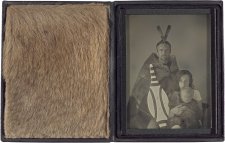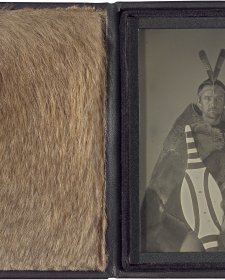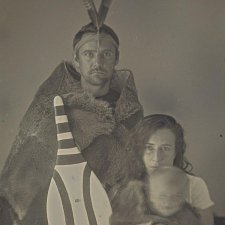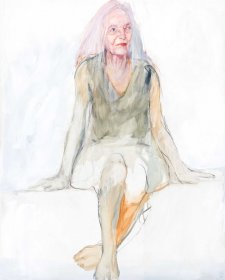Responsible government – the system wherein members of the Executive (the premier and cabinet) are also elected members of Parliament – was introduced in New South Wales in 1856. Before this, the colony had been administered by governors who, from 1824, governed with the assistance of a Legislative Council. The end of convict transportation, the gold rush, and other upheavals of the 1840s and 1850s contributed to demands for a more democratic system of government, ultimately resulting in the creation of a new constitution in 1855. The first elections for the Legislative Assembly were held in March and April 1856; the first ministry was sworn in in June, its members being (left to right): Thomas Holt (1811–1888), treasurer; Sir William Manning (1811–1895), attorney-general; Sir Stuart Donaldson (1812–1867), premier; Sir John Darvall (1809–1883), solicitor-general; and George Robert Nichols (1809–1857), auditor-general and secretary for works.
Brothers William (1809–1895) and James Freeman (1814–1870) emigrated to New South Wales in 1853 and 1854 respectively, having become involved in photography in England. In early 1855 they advertised that their revamped studio was ‘the most perfect room in the colony’ for photography, boasting a 45 square-metre skylight and a ‘separate dressing compartment for ladies’. In the late 1860s they opened a new premises on Castlereagh Street which included an outdoor gallery for taking ‘Equestrian Portraits, Groups, Horses, Dogs and Cats’. William continued the business following James’s death in 1870. By the time the studio finally closed it had become the longest-running photography business in the country.
Purchased with funds provided by L Gordon Darling AC CMG 2009
Thomas Holt (age 45 in 1856)
Sir William Montagu Manning (age 45 in 1856)
Sir Stuart Donaldson (age 44 in 1856)
Sir John Darvall (age 47 in 1856)
George R. Nichols (age 47 in 1856)
L Gordon Darling AC CMG (38 portraits supported)



On one level The Companion talks about the most famous and frontline Australians, but on another it tells us about ourselves.



This sample of 56 photographs takes in some of the smallest photographs we own and some of the largest, some of the earliest and some of the most recent, as well as multiple photographic processes from daguerreotypes to digital media.



The Darling Prize is a new biennial prize for Australian portrait painters, painting Australian sitters. The winner receives a cash prize of $75,000.